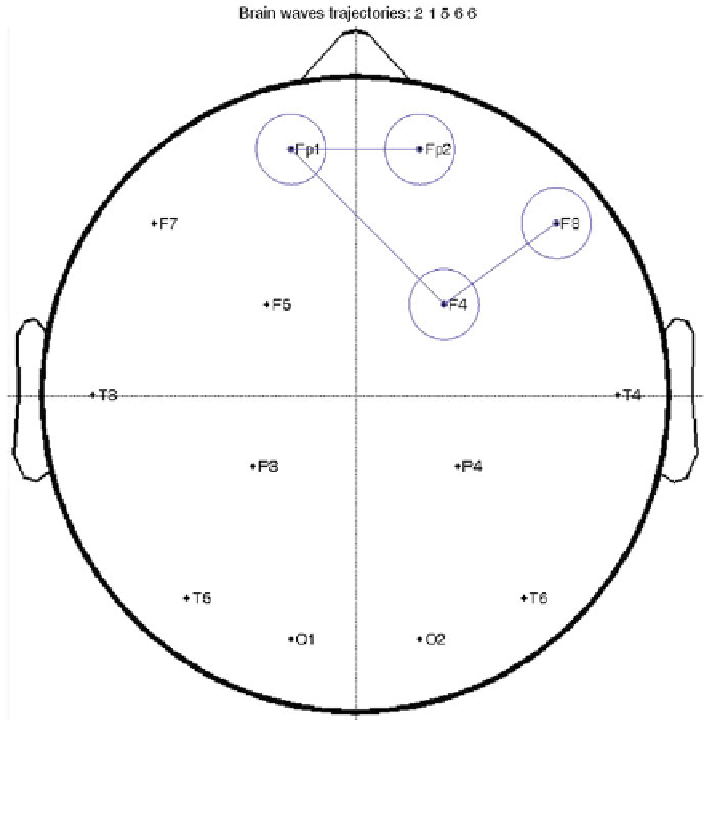Information Technology Reference
In-Depth Information
Fig. 10.4
Tracking the behaviour of the amplitude of the EEG signal across a montage of
electrodes. In this example, the area with the highest EEG power moved from electrode 2 (Fp2) to
1 (Fp1), and then it moved to electrode 5 (F4), followed by electrode 6 (F8), where it remained for
two windows
A number of analyses can be performed in order to track the behaviour of other
types of EEG information. For instance, they generated two concurrent melodies by
tracking the trajectory of alpha rhythms and beta rhythms simultaneously. They also
generated polyphonic music by tracking other types of EEG information simulta-
neously, such as correlation between electrodes or sets of them, synchronisation
between one or more electrodes, and so on.
Another example of musi
cation was reported by Wu and colleagues. They
harnessed EEG data generated by variations in sleep to compose music (Wu et al.
2009
). The pitch and duration of notes were derived from formulas that mapped
each EEG wave to a determinate pitch and its period to duration. Characteristics of

